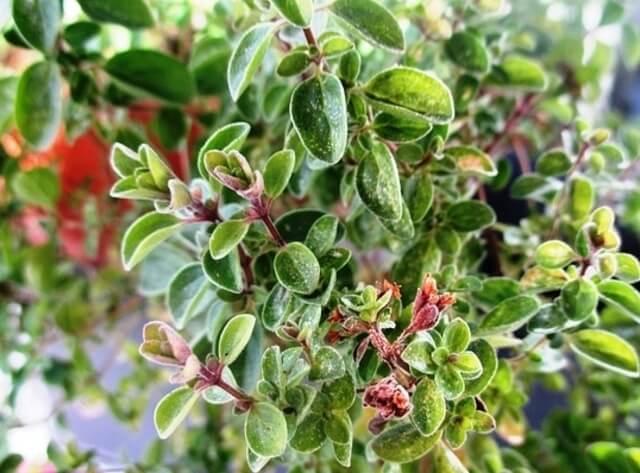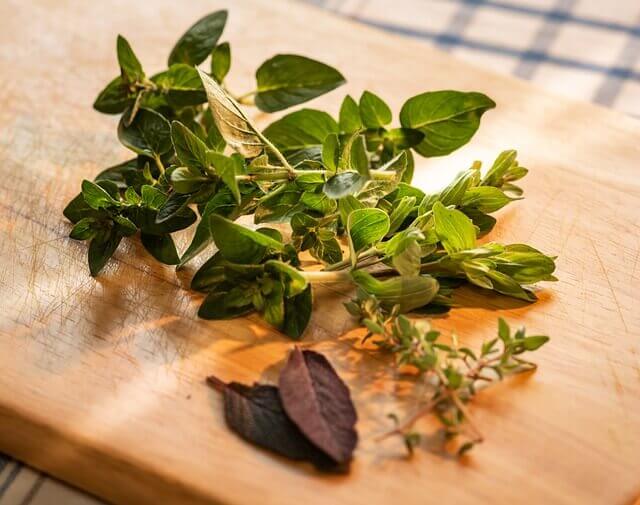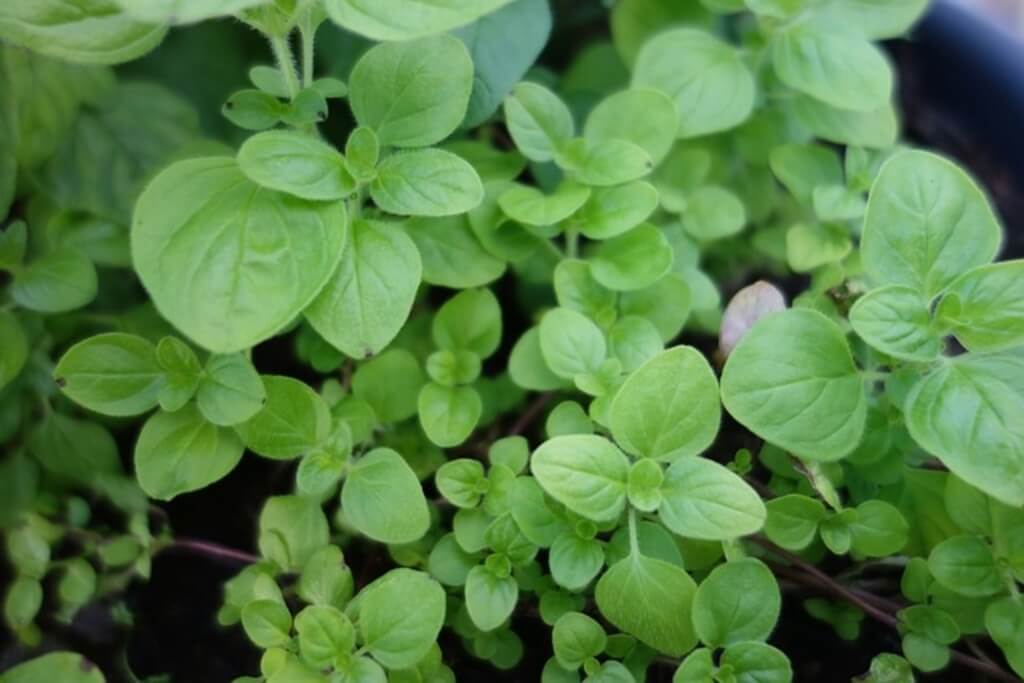53 Fun Facts About Marjoram (with Photos, ID & Info)
Marjoram is a herb that can be used in cooking, as well as for medicinal purposes. It has a sweet and slightly spicy taste. In this article, we will explore 53 fun facts about marjoram with photos, ID & info about this delicious herb.
Table of Contents
Overview
- Order: Lamiales
- Family: Lamiaceae
- Genus: Origanum
- Species: O. majorana
- Binomial Name: Origanum majorana
- Scientific Name: Origanum majorana
- Plant Type: Perennial herb
- Flower Color: Pink, Purple or White flowers.
- Propagation: Seed, cuttings, layering, and by division.
- Plant Height: 18-40″ inches (1.5-3.3 feet)
- Plant Spread: 12-18″ inches. (1.0-1.5 feet)
- Zones: 4 to 8
- Harvest Period: est. 60 days.
- Sun Exposure: Full Sun
- Soil Type: Rich, loamy, well-drained soil.
- Soil pH: 6.7-7.0
Plant Description
Marjoram is a small, woody shrubby perennial herb with sweet, spicy, and camphor scent. The light green oval leaves are about 1.5″ inches in length, and approximately 0.5″ inch wide. The plant produces purplish-pink flowers in small clusters at the apex of the branches, with many stamens.
The stamens combine with the pistil to form a fruit with three sepals and three petals. It is native to the Middle East and Mediterranean region of Europe, but it has also naturalized all over North America. It is cultivated in many other regions for its culinary uses.

Fun Facts About Marjoram
- Marjoram is a perennial herb with a pine-like aroma and a flavor reminiscent of oregano or thyme.
- In Roman times, it was believed that large doses could induce sleep and ward off evil spirits.
- Marjoram is closely related to thyme and oregano, both key ingredients in Mediterranean cuisine.
- It’s one of the world’s most popular herbs for use in cooking.
- It can also be used as an ornamental plant on patios or at the edge of flowerbeds.
- Marjoram reaches only about 3 feet in height and a width of 12″ inches.
- Marjoram is native to the Mediterranean, Southern Europe and Southwestern Asia.
- It’s also found in China, Southern Russia and other mountainous areas of Asia, as well as South America.
- An ancient legend says that the herb helps strengthen the heart, which is why ancient Greeks gave it to their maidens before they were married.
- Marjoram is used in modern medicine as a carminative (expels gas from the intestines), digestive aid and mild sedative to relieve anxiety and tension.
- Ancient Greeks drank a herbal tea made from marjoram that was said to bring good luck and happiness.
- It’s also thought to encourage fertility.
- In 2009, a medical study showed that marjoram oil was effective at relieving pain and inflammation.
- An Ancient Greek physician was said to have been the first herbalist, using marjoram as an antibiotic, stimulant and pain reliever.
- In Greek mythology, Artemis was given a potion of marjoram by her father Zeus as a remedy for headaches.
- A small amount of marjoram is sometimes used as a vegetable additive to enhance the flavor of vegetables such as cucumbers, tomatoes and potatoes.
- Marjoram leaves possess a sweet, gentle taste and because of the volatile oils contained in its leaves it is often used to flavor meats and can function as a main spice.

- The wild form of the plant grows in dry, sunny areas and is smaller than the cultivated varieties.
- The Greeks believed that marjoram could heal wounds and revive love if placed under someone’s pillow or thrown into their bath water at night.
- Marjoram may be grown from seed, but it should be started indoors 4 weeks before the last frost date. It should be kept moist until transplanted outside, which will require full sun and well-drained soil with slightly alkaline pH levels (7).
- Marjoram plants should be watered regularly and protected from heat and cold.
- Marjoram herb plants should be harvested before the flower buds open and dried for essential oils.
- The plant may attract beneficial insects such as bees and ladybugs, and it is said that planting marjoram near carrots will help repel carrot flies.
- When used in food preparation, marjoram is considered both a sweet and a spicy herb because of its slightly bitter taste. It’s often used to flavor meats such as chicken, lamb or beef roasts, but it can also be added to soups or sauces for flavoring purposes.
- The marjoram herb plant is a perennial evergreen belonging to the mint family Lamiaceae.
- Marjoram was used as a type of culinary herb to flavor food and drinks for thousands of years, particularly in Mediterranean countries such as Greece, Italy and Spain.
- Marjoram leaves are commonly used in cooking in North African cuisine, including couscous with dried marjoram.
- The sweet-flavored leaves are usually added whole or chopped at the end of cooking dishes that require long simmering or stewing times.
- The plant is also grown for its intense flowers, which are used both fresh and dried in various culinary dishes around the world.
- The herb is also widely used as a component of the famous French dressing, vinaigrette, which is prepared using three simple ingredients – oil, vinegar and herbs.
- Marjoram contains several antioxidants that are beneficial to your health. Among them are luteolin, apigenin and tannins that are particularly effective antioxidants for treating various types of cancer.
- Also, these components were found to be effective in reducing free radicals in the digestive tract, which can lead to various gastrointestinal problems.
- They are often used as a remedy for indigestion and heartburn, flatulence and nausea.
- Marjoram is a great home remedy for a number of respiratory conditions, including bronchitis, asthma and smokers’ cough.
- The herb can be used as an expectorant, helping to relieve lung congestion.
- In addition to this, marjoram is also helpful in relieving pain caused by rheumatism, gout and arthritis.
Related Article: How to Grow Sweet Marjoram Herb at Home







